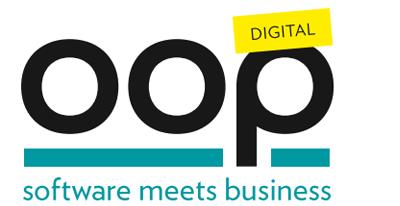
SOFTWARE MEETS BUSINESS:
Die Konferenz für Software-Architektur
08. - 12. Februar 2021, Online-Konferenz

SOFTWARE MEETS BUSINESS:
Die Konferenz für Software-Architektur
08. - 12. Februar 2021, Online-Konferenz

AI is maybe the most powerful tool our generation has available. Andrew NG called it "the new electricity". But what does it take to build AI enabled products? What are the key elements to achieve production grade AI? How does it impact your development process? How can quality be achieved? These are the questions this talk tries to answer. You will get an idea why the industry is talking about nothing less than a paradigm shift when it comes to developing AI based products.
Target Audience:…
Whether evolution or revolution, or yet old wine in new skins, for more than 10 years, DevOps is changing how we develop and deliver software. This session looks back on the roots of DevOps, its movement until today, and current as well as possible future directions. This interactive session aims to offer a set of fruitful starting points for reflection and discussions.
Target Audience: Anyone interested in developing and delivering software
Prerequisites: Knowledge in DevOps and agile software…
My hope for the future of software development; We learn that we are responsible for so many big and small impacts to society and that we have to take that seriously. We learn that even if software processes are described in great detail, we should not stop questioning whether we are still doing the right thing, the right way. We can bring our whole self to work. But most of all we learn that continuous integration is something you must have, continuous delivery is very nice to have, and…
Looking back, especially now, makes us sad, but Linda will share scientific evidence that remembering the past provides measurable benefits. She'll outline the science and help us remember some of the "good old days" and then we'll all feel better.
Target Audience: Anyone
Prerequisites: None
Level: Basic
Extended Abstract:
Many of us experience nostalgia as a bittersweet emotion. It combines the memory of good times with the ache of loss. You might think that people who are more nostalgic are…
Dieser Talk berichtet von den Erfahrungen der letzten 7 Jahre bei der Digitalen Transformation der DATEV aus der Sicht des Software-Engineering. Während es einfach scheint, den Buzzwords der Zeit nachzulaufen und sich dadurch inmitten der sogenannten “Digitalen Transformationen” zu fühlen, ist es meist doch viel diffiziler, eine Firma nachhaltig und zum Besseren zu entwickeln. Dieser Vortrag geht auf nicht ganz so offensichtliche Aspekte und deren Wechselwirkungen ein.
Zielpublikum:…
The problem at hand is partly the application of software engineering best practices to AI, but more so the evolution of software engineering to attend to software-intensive systems that contain AI components. In this lecture, I'll examine both dimensions: emerging AI architectures, neuro-symbolic systems, designing/testing/deploying/refactoring/maintaining systems with AI components; the future of software engineering.
Target Audience: Software engineers
Prerequisites: Curiosity and a desire to…
Industrial products, factories, trains and energy systems are starting to connect with business transactions, financial services and analytics. However, in the context of IoT, M2M, Industry 4.0, and global supply chains, there is a growing need to have such integration of operational and business systems across company and trust boundaries. This presentation explains how distributed ledger technologies like blockchain play a key role as underlying trust technology in enabling such cross-company…
Spaghetti business is difficult enough to swallow without serving a plate of spaghetti architecture and another of spaghetti code. Consider some really hard problems with data and learn how to tackle them with a minimum of technical complexity. Vaughn demonstrates complex business scenarios with solutions using Reactive, DDD, events, and streaming, in a microservices-based distributed system, but with the edges whittled smooth. Join Vaughn as complexity is blown away like wood shavings in a fall…
When we look at where we are now with software development and applications, we can see the roots of today's world in the past. Ideas in current practice are not new, they are just more popular — machine learning, (micro)services, DevOps, Agility, etc. And some things have always been promised as revolutionary but have never taken centre stage, such as the story of CASE tools, MDA, AOP and generative programming. We trace back through time to examine these trends so that we can go forward. What…